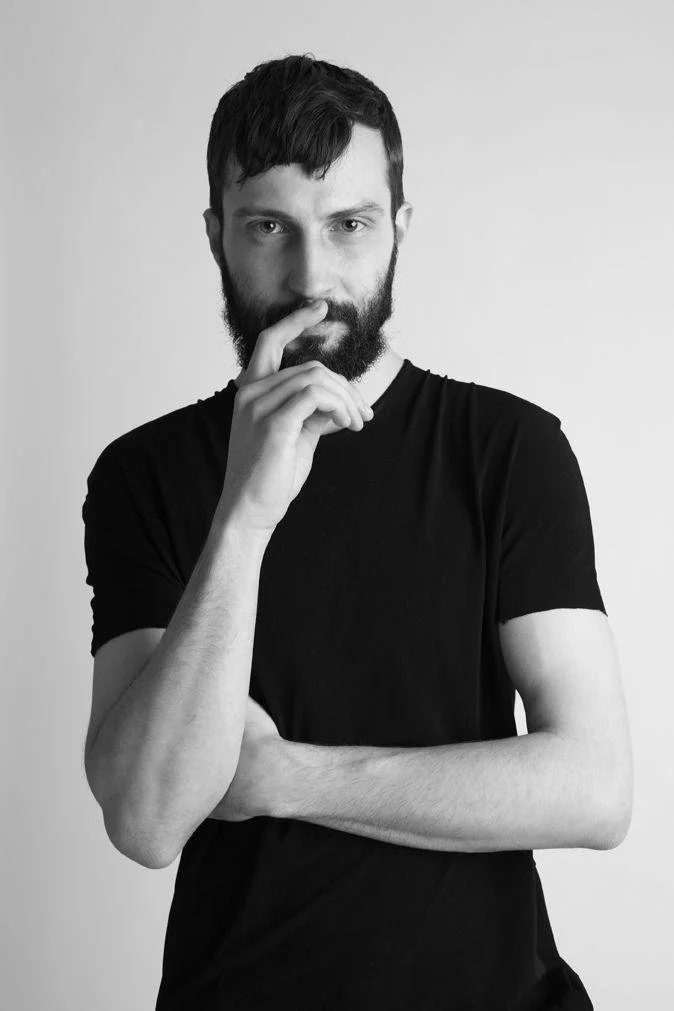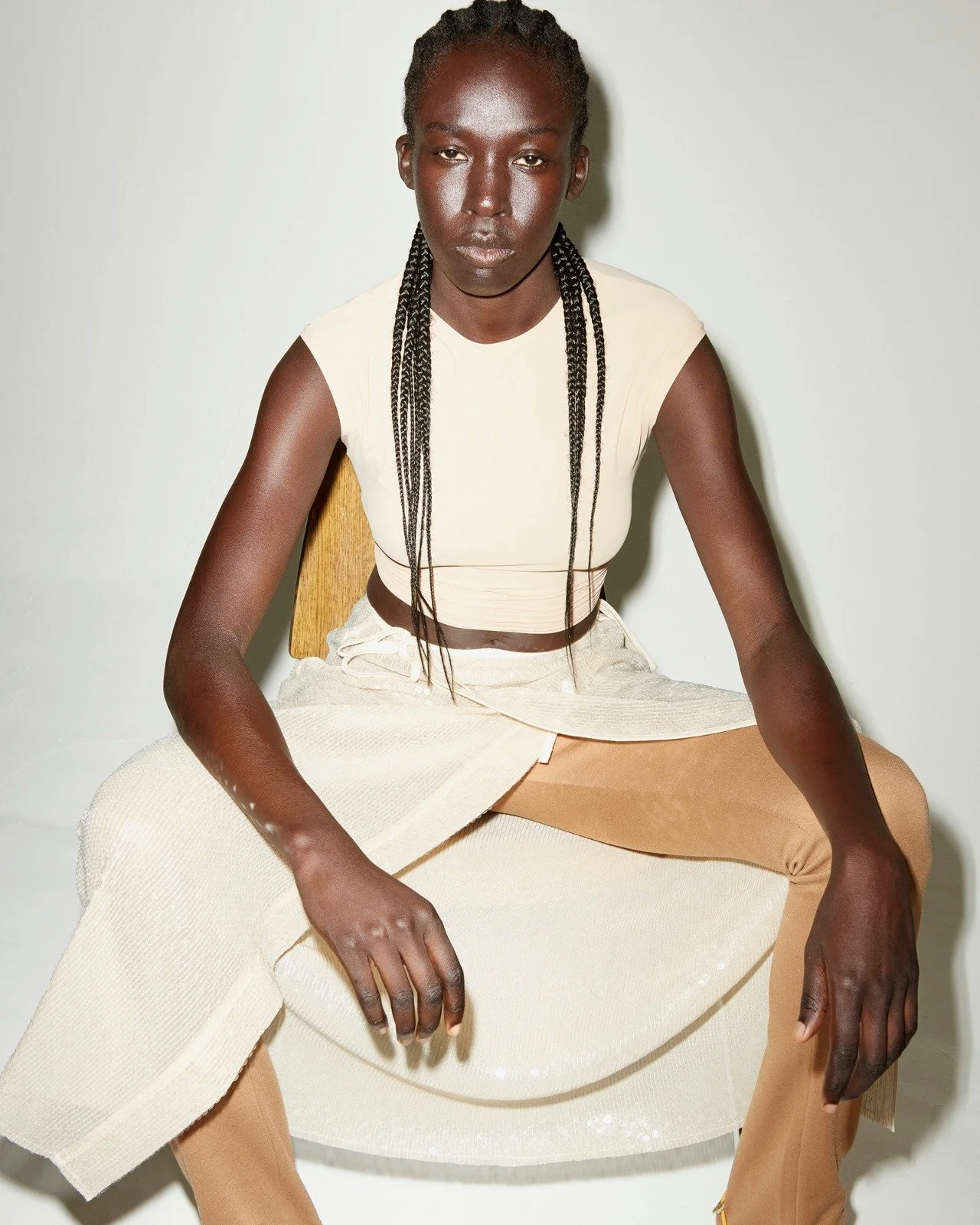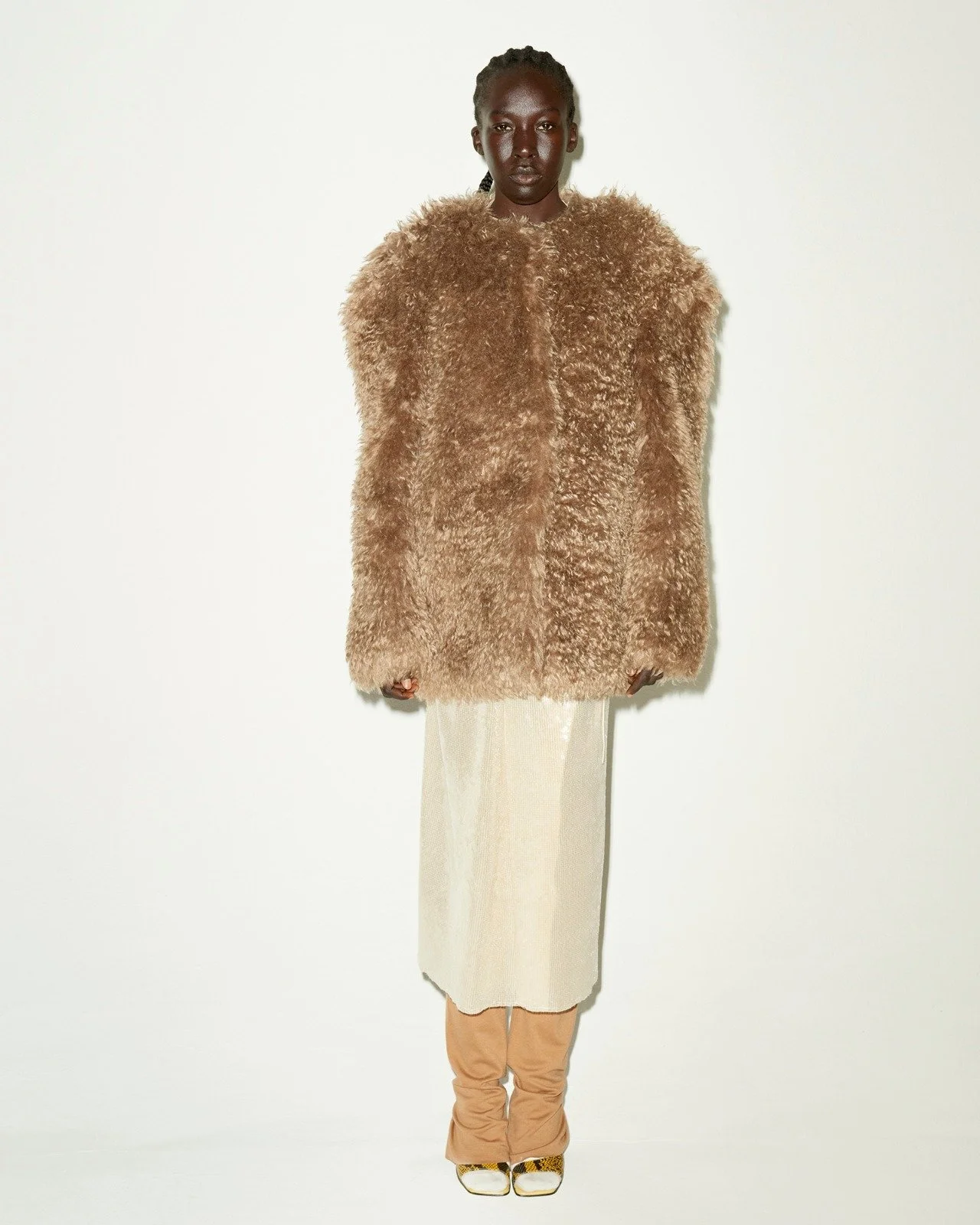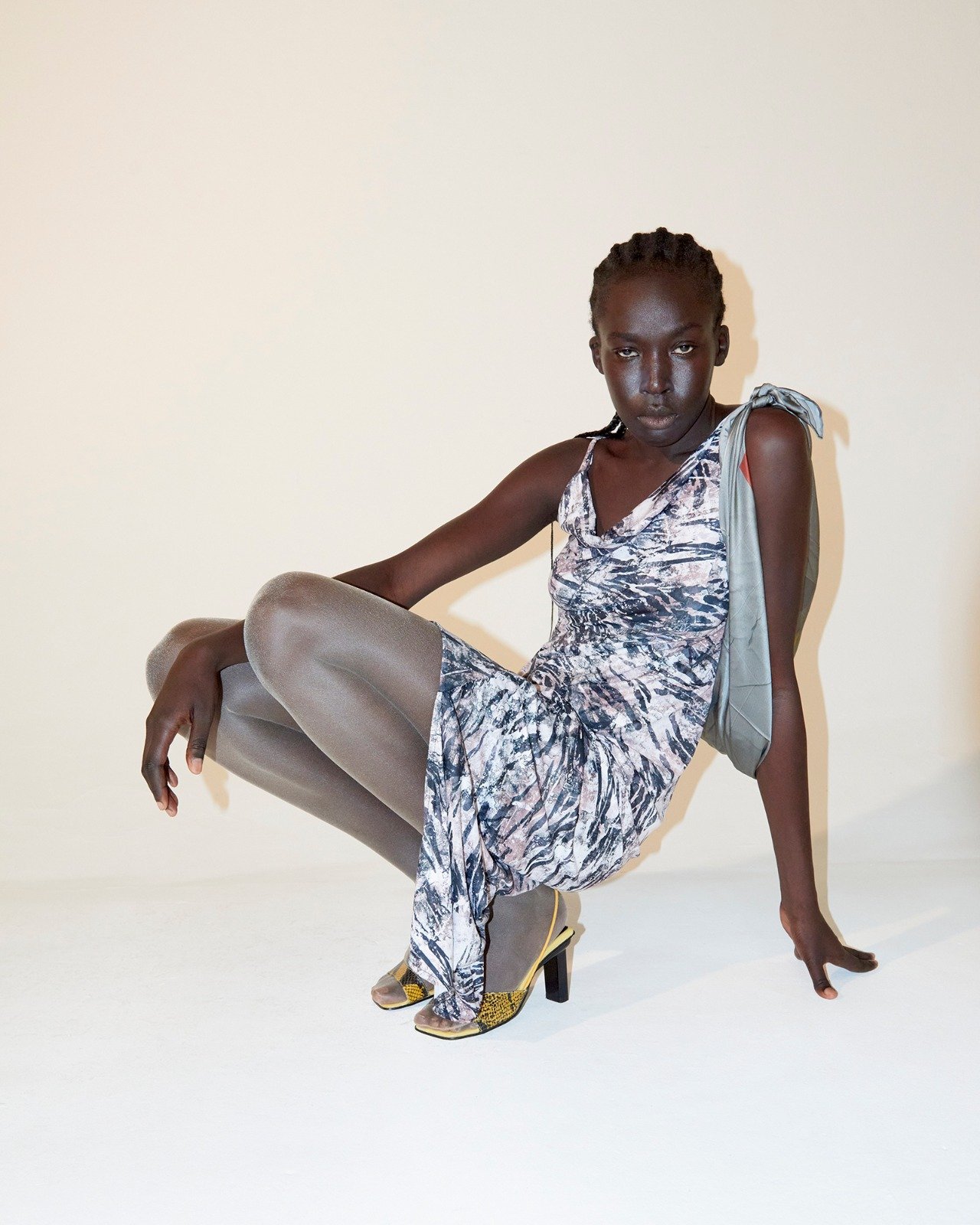MARTIN NIKLAS WIESER ,
FASHION DESIGNER
September, 30th 2022
ENG
Martin Niklas Wieser studied fashion design at Weißensee Art Academy Berlin before joining the Royal College of Art London for a research study program. After launching his brand for the first time in 2015, he worked as a designer for Proenza Schouler, Nicolas Andreas Taralis and as a trend consultant with MyTheresa China. He is inspired by his working class background, the mundane regularity of the working-class reality as well as the inescapable juxtaposition between catering to a capitalist society and an aim to create a different future.
ITA
Martin Niklas Wieser ha studiato fashion design presso la Weißensee Art Academy di Berlino prima di entrare al Royal College of Art di Londra per un programma di ricerca. Dopo aver lanciato il suo brand per la prima volta nel 2015, ha lavorato come designer per Proenza Schouler, Nicolas Andreas Taralis e come consulente di tendenza per MyTheresa Cina. Si ispira al suo background di classe operaia, alla banalità della realtà operaia, nonché all'ineluttabile contrapposizione tra il soddisfare i bisogni di una società capitalista e l'obiettivo di creare un futuro diverso.
ENG
LZ: You recently relaunched your fashion brand Martin Niklas Wieser, which are the concept and imagery behind it?
MNW:The concept was to create a collection over time. Season by season to build something bigger and substantial, which takes from the past but also builds on the future. We see the brand as a field of experimentation to examine topic like luxury and sustainability: What is luxury today? How can we live in a world that is burning and still buy into the ideas capitalism offers? How can we – as individuals as well as a society – hold the tension between wanting to create something new and being aware of the impact our behavior has?
The aesthetic of the collection is informed by an investigation of proportion and silhouette. We were inspired by the human body, the shapes it forms inconjunction with clothes, technology, and its aggressive interference in privacy and identity.
The imagery is a collection of snapshots of the citys we work in, we recently shot our SS23 in London, this was really a driving force for the imagery codes that it stands for. We also shot some images in Paris during fashion week which informed those images. Step by step this will also build a certain coded imagery while being very much linked with the processes we undertake as a brand.
IT
LZ: Di recente avete rilanciato il vostro brand Martin Niklas Wieser. Quali sono il concept e l’immaginario alla base?
MNW: Il concetto era quello di creare una collezione nel tempo. Stagione dopo stagione, per costruire qualcosa di più grande e sostanziale, che prenda spunto dal passato ma che si basi anche sul futuro. Vediamo il marchio come un campo di sperimentazione per esaminare temi come il lusso e la sostenibilità: Che cos'è il lusso oggi? Come possiamo vivere in un mondo in fiamme e continuare a credere alle idee che il capitalismo ci offre? Come possiamo, sia come individui sia come società, mantenere la tensione tra il desiderio di creare qualcosa di nuovo e la consapevolezza dell'impatto del nostro comportamento?
L'estetica della collezione è informata da un'indagine sulle proporzioni e sulla silhouette. Ci siamo ispirati al corpo umano, alle forme che si formano con gli abiti, la tecnologia e la sua aggressiva interferenza nella privacy e nell'identità.
L'immaginario che ne riuslta è una raccolta di istantanee delle città in cui lavoriamo, recentemente abbiamo scattato la nostra SS23 a Londra, e questo è stato davvero un elemento trainante per i codici dell'immagine che rappresenta, cosi come gli scatti fatti a Parigi durante la Fashion Week.
S/S’23 “IN FLUX”. photocredits : Ladislav Kyllar, consulting: Alexandra Bondi De Antoni, model: Awut Atak: Production: gdts.productions, Styling: Erik Raynal, Hair and Make up: Ryo Narushima
S/S’23 “IN FLUX”. photocredits : Ladislav Kyllar, consulting: Alexandra Bondi De Antoni, model: Awut Atak: Production: gdts.productions, Styling: Erik Raynal, Hair and Make up: Ryo Narushima
S/S’23 “IN FLUX”. photocredits : Ladislav Kyllar, consulting: Alexandra Bondi De Antoni, model: Awut Atak: Production: gdts.productions, Styling: Erik Raynal, Hair and Make up: Ryo Narushima
ENG
LZ: In your collection, human craftsmanship and computer-aided design coexist in the design and manufacturing process. How/ in which measure do you think fashion can benefit from technology and heritage?
MNW: Heritage and human craftsmanship are of upmoste importance in creating a garment. New technologies such as fully fashioned knit or additive manufacturing technologies can expand manufacturing opportunities. The opportunity lies in merging heritage and new technologies, make them coexist.
IT
LZ: Nella vostra collezione, l'artigianato e la progettazione assistita dal computer coesistono nel processo di design e di produzione. In che modo e in che misura pensate che la moda possa trarre vantaggio dalla tecnologia e dall’heritage?
MNW: L'heritage e l'artigianato umano sono di fondamentale importanza nella creazione di un capo di abbigliamento. Le nuove tecnologie, come la maglieria completamente modellata o le tecnologie di produzione additiva, possono ampliare le opportunità di produzione. L'opportunità sta nel fondere patrimonio e nuove tecnologie, facendole coesistere.
ENG
LZ: Many fashion companies, especially fast fashion ones, use artificial intelligence to predict future trends. Do you think this technology can be used to benefit slow and responsible fashion?
MNW: This is exactly the interesting point. I worked in trendconsulting in Paris before, in a practice which superficially seems like a copy paste approach, this doesnt show the entire complexity of trends and societal shifts. I think trend observation offers a great tool to document and map society. Technology as such functions only as a tool as well, it is up to us as designers interacting with the vast information which is accessible to all of us to place this infomation, approach it critically and use them for a larger narrative.
IT
LZ: Molte aziende di moda, soprattutto quelle del fast fashion, utilizzano l'intelligenza artificiale per prevedere le tendenze future. Pensate che questa tecnologia possa essere utilizzata a vantaggio della moda lenta e responsabile?
MNW: Questo è molto interessante. In passato abbiamo lavorato a Parigi come consulenti di tendenze, questa pratica che superficialmente sembra un approccio di copia e incolla, non mostra l'intera complessità della ricerca che c’è a monte , anche in relazione ai cambiamenti della società. Penso che l'osservazione delle tendenze offra un grande strumento per documentare e mappare la società. La tecnologia in quanto tale funziona solo come strumento; sta a noi designer, che interagiamo con le vaste informazioni accessibili a tutti noi, collocare queste informazioni, affrontarle in modo critico e utilizzarle per una narrazione più ampia.
S/S’23 “IN FLUX”. photocredits : Ladislav Kyllar, consulting: Alexandra Bondi De Antoni, model: Awut Atak: Production: gdts.productions, Styling: Erik Raynal, Hair and Make up: Ryo Narushima






